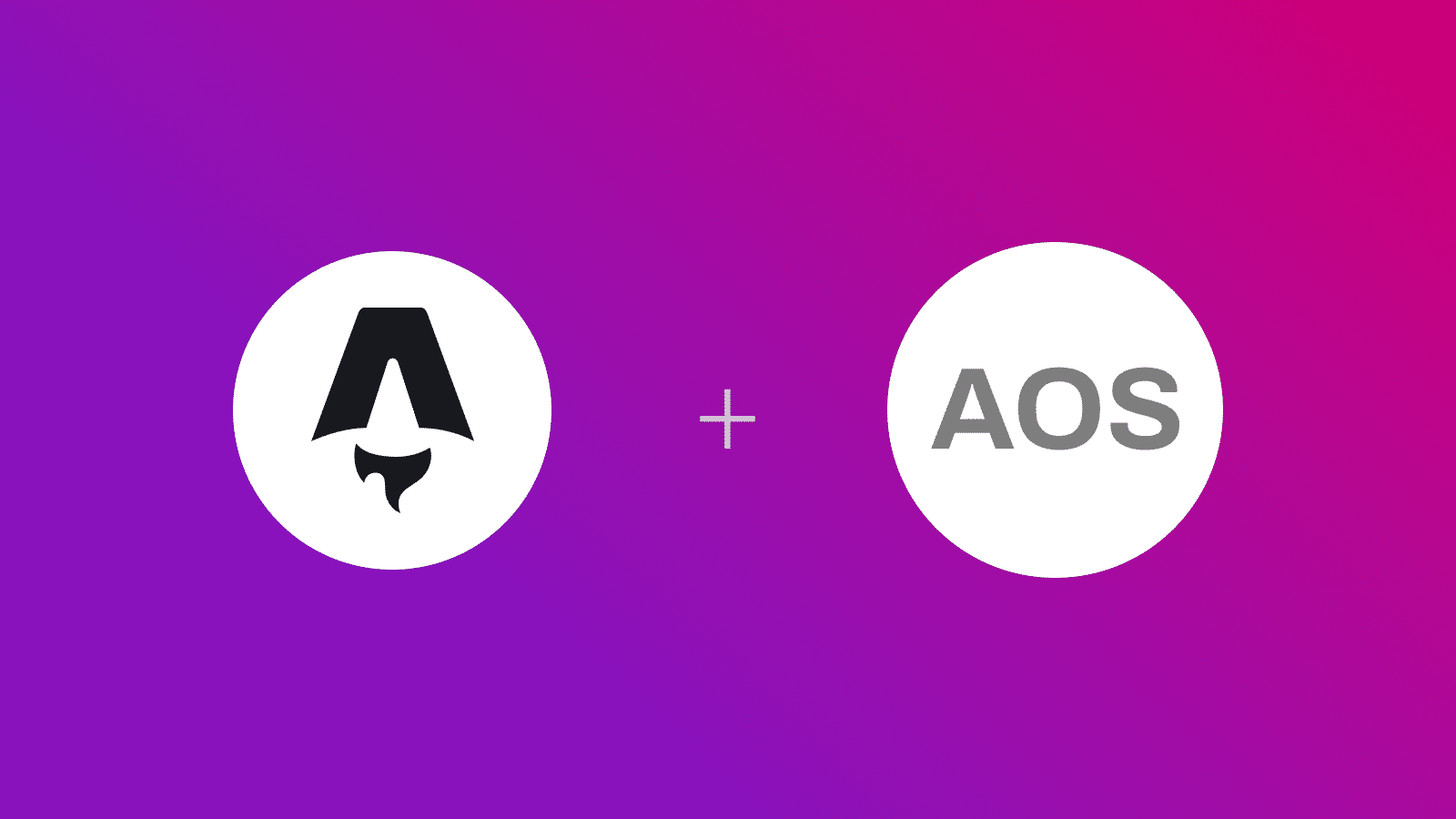
In this guide, you will learn how to use Animate On Scroll (AOS) in an Astro application. You will go through the process of setting up a new Astro project, installing the aos module and adding a fade-in animation to a heading.
Prerequisites
You’ll need the following:
- Node.js 18 or later
Table Of Contents
- Create a new Astro application
- Integrate Animate On Scroll (AOS) in your Astro project
- Build and Test your Astro application locally
Create a new Astro application
Let’s get started by creating a new Astro project. Execute the following command:
npm create astro@latest my-appnpm create astro is the recommended way to scaffold an Astro project quickly.
When prompted, choose:
Emptywhen prompted on how to start the new project.Yeswhen prompted if plan to write Typescript.Strictwhen prompted how strict Typescript should be.Yeswhen prompted to install dependencies.Yeswhen prompted to initialize a git repository.
Once that’s done, you can move into the project directory and start the app:
cd my-appnpm run devThe app should be running on localhost:4321.
Now, let’s move on to integrate AOS in your Astro application.
Integrate Animate On Scroll (AOS) in your Astro project
Install Animate On Scroll (AOS) SDK
Execute the command below to install the necessary package for using AOS:
npm install aosIt installs the following:
aos: An animate on scroll library.
Use AOS in the index route
To demonstrate usage of AOS, you will add a fade in animation to a text.
Make the following additions in the src/pages/index.astro file:
------
<html lang="en"> <head> <meta charset="utf-8" /> <link rel="icon" type="image/svg+xml" href="/favicon.svg" /> <meta name="viewport" content="width=device-width" /> <meta name="generator" content={Astro.generator} /> <title>Astro</title> </head> <body> <h1 data-aos="fade-in" data-aos-delay="300">Astro</h1> </body></html>Notice that you’ve used two AOS specific attributes here:
data-aos: to specify the type of animation desireddata-aos-delay: to specify the time for which the animation should last
Optionally, read more on AOS attributes.
So you’d now be able to see a heading named Astro. Let’s import aos module in the index route via the following additions:
---import 'aos/dist/aos.css';---
<html lang="en"> <head> <meta charset="utf-8" /> <link rel="icon" type="image/svg+xml" href="/favicon.svg" /> <meta name="viewport" content="width=device-width" /> <meta name="generator" content={Astro.generator} /> <title>Astro</title> </head> <body> <h1 data-aos="fade-in" data-aos-delay="300">Astro</h1> <script> import AOS from "aos"; AOS.init(); </script> </body></html>and… you are done!
In the additions above, you’ve imported the required CSS by AOS library, and initiated the AOS instance on the client side (in the browser).
Build and Test your Astro application locally
To test the application, prepare a build and run the preview server using the command below:
npm run build && npm run previewConclusion
In this guide, you learned how to use Animate On Scroll (AOS) in an Astro application.
If you have any questions or comments, feel free to reach out to me on Twitter.


